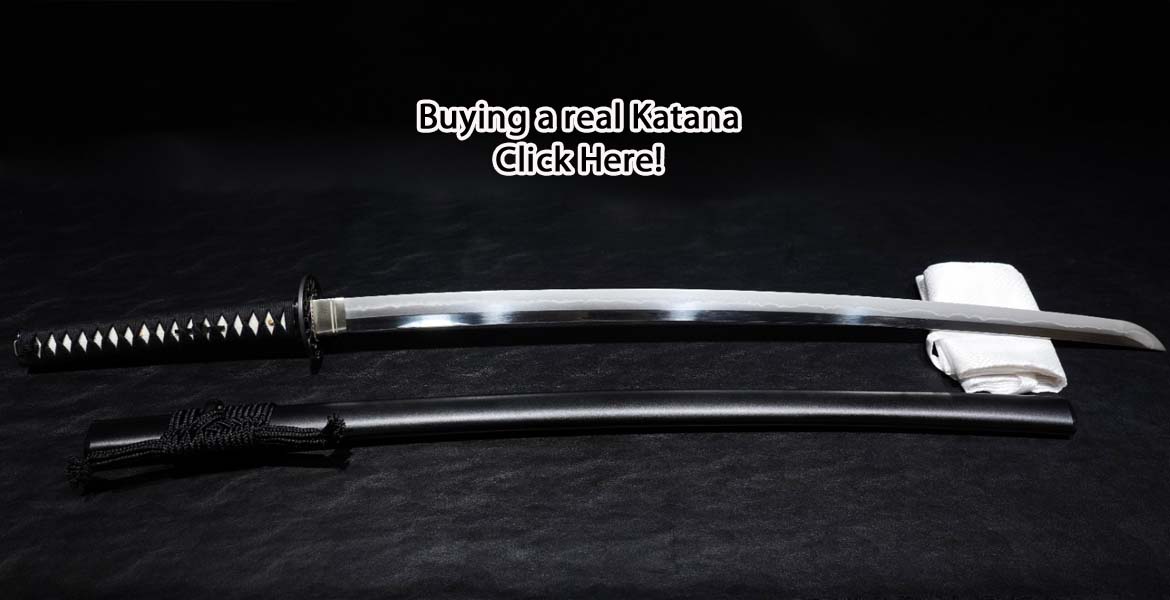What is an uchigatana?
The uchigatana is a combination of two Japanese words: uchi and gatana. Uchi (打) is a derivative of the verb utsu and literally means to hit. A Gatana is a variation on the word katana and means sword.
The uchigatana is worn with the cutting edge up, much like a katana, unlike a tachi which was worn with the cutting edge down. The development from a tachi to the uchigatana lies in the way of war that gradually changed.
The transitions between the different styles of Japanese swords were gradual and the first descriptions of the word katana as distinct from a tachi can be found in the Kamakura period. The Kamakura era (鎌倉時代) is a period in Japanese history from 1185 to 1333. The fact that the swords were worn significantly differently from about 1400 can be deduced from the fact that the swords were signed in the katana style in May. A mei or signature of a Japanese blacksmith on a blade is usually placed on the nakago or tang so that it faces away from or outside the sword bearer.
Because the mei were placed differently, it probably shows that the samurai started carrying their swords differently.
During the Muromachi shogunate, the samurai had all the power in Japan and the tachi was initially the swords of choice of the samurai warriors. The tachi was often paired with the tanto or knife as the secondary weapon. The tachi was designed for combat on horseback and a fairly long sword.
The first uchigatana were often of poor quality and used by low-ranking foot warriors. Few of these samurai swords can be found because they were more or less seen as disposable swords.
The samurai on horseback changed more to fighting on the ground and this change created a need for a different type of swords.
The advantage of carrying a sword with the edge upwards lies in the fact that you could draw it and strike or cut at the opponent with one movement.
A tachi needed two movements to attack, first pulling and then hitting the opponent in the opposite direction.
The samurai therefore needed a sword that would be very maneuverable and more suitable for on the ground and close-range combat. So this is actually where the Uchigatana was born, a sword with a shorter blade and slightly straighter tsuka or handle.
For these reasons, together with the fact that a samurai always carried a tanto or knife, it became common to wear an uchigatana. These were often on the short side, like a 2 shaku, and therefore the size of an o-wakizashi (o = large). Handling this was often with one hand and the cutting edge upwards through the obi or band.
Forging an Uchigatana
Initially the uchigatana were of inferior quality, but soon the age-old and traditional methods of forging were also applied to the uchigatana. The basic material for an Uchi-Katana was also tamahagane, which was carefully selected for quality. The tamahagane steel was the end product of a complex process in which iron sand and carbon were melted in a tatara into high-quality steel with ideal properties.
The forging of the blade of an uchigatana by the blacksmith made with the knowledge of hundreds of years. After the tamahagane was forged into the correct shape, it was folded many times to make the steel more homogeneous and to remove impurities. A very critical moment was shocking the sword steel in water with the katana blade partly covered with clay. The differential hardening ensured that the steel achieved the most optimal properties through a harder edge and relatively softer back. This also created the sori or characteristic curvature of the blade.
Benefits Uchigatana
This samurai sword had a balance between light weight and strength. A lighter sword is more agile and faster, making it very effective in close combat battles. The uchigatana could be quickly pulled from the belt and used immediately for an attack.
Especially in the hands of the trained samurai, this uchigatana sword was a very effective and efficient weapon.



